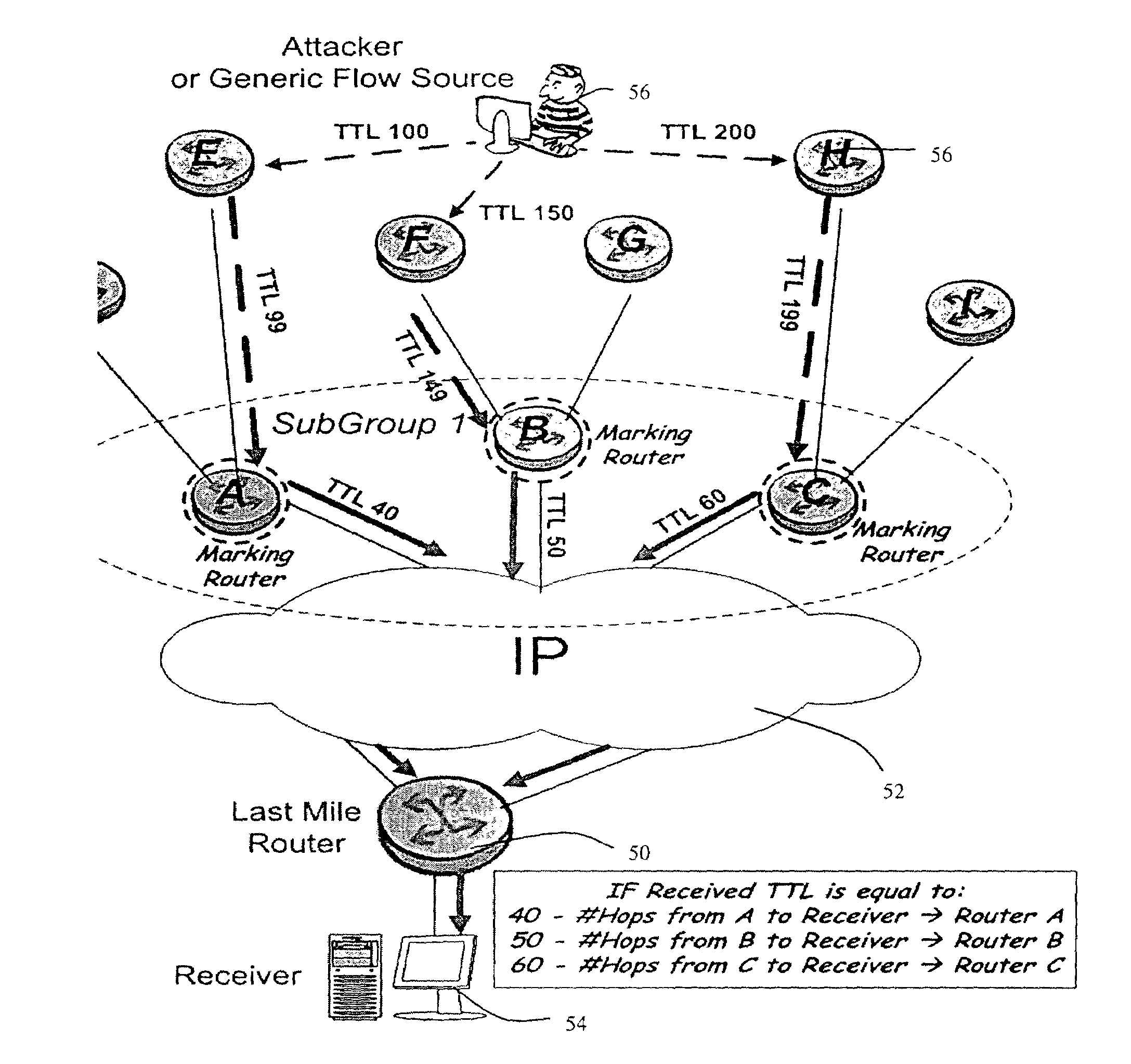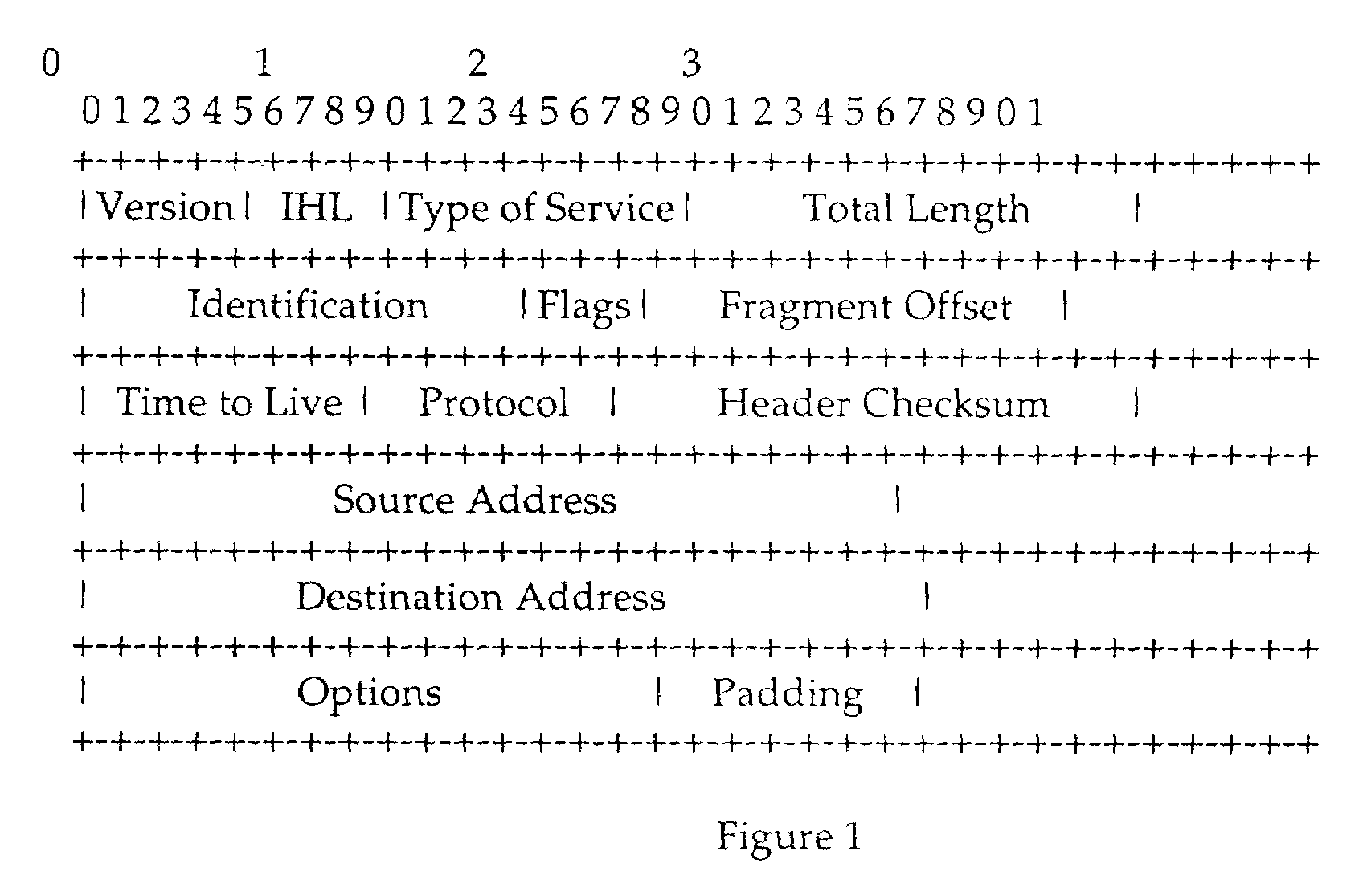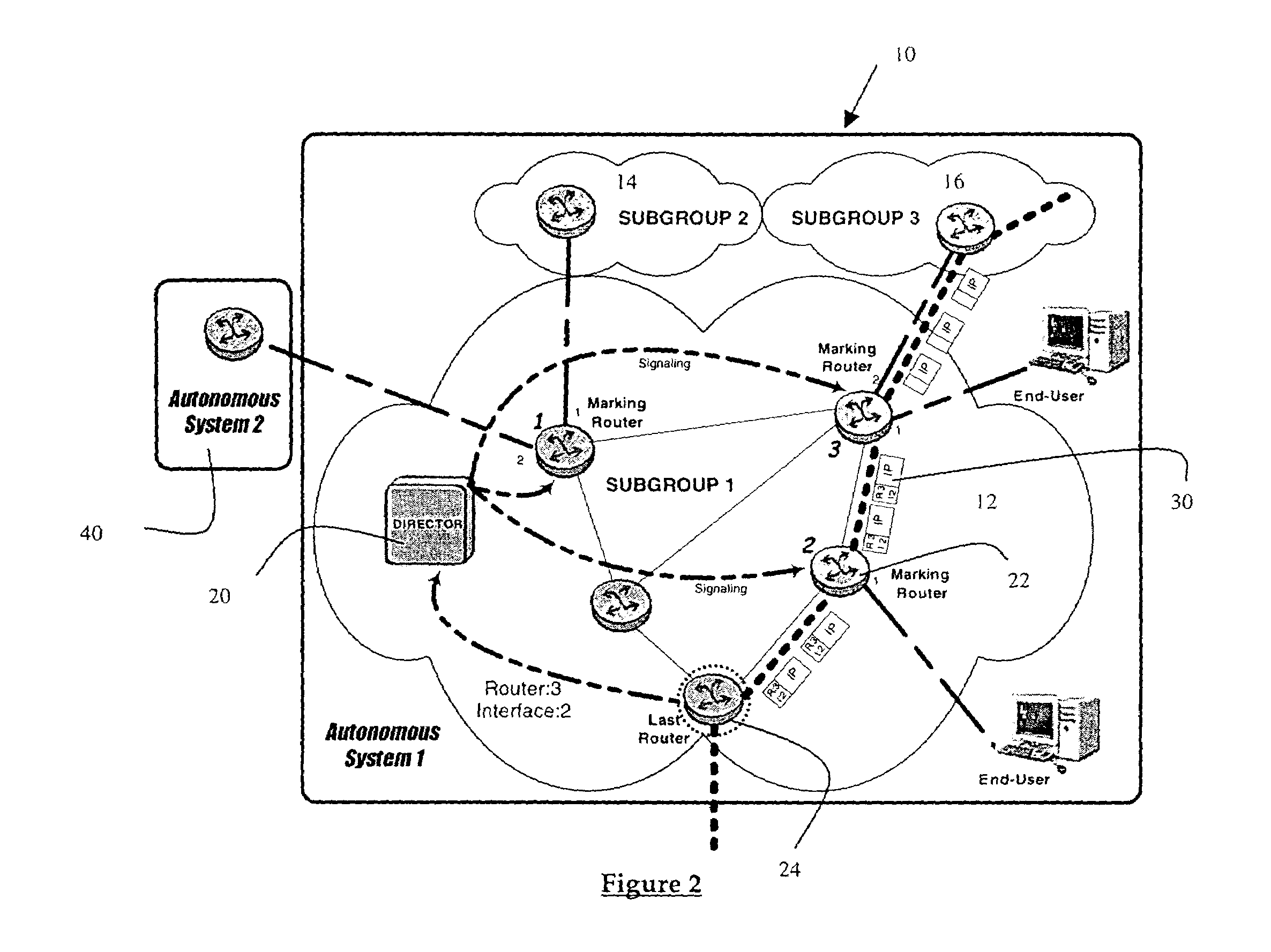IP Time to Live (TTL) field used as a covert channel
a technology of ip time to live and covert channels, applied in the field of wide area communications systems, can solve the problems of complete disruption of service for a targeted victim, difficulty in precisely identifying the real source, and the increase in the incidence of malicious attacks on the intern
- Summary
- Abstract
- Description
- Claims
- Application Information
AI Technical Summary
Benefits of technology
Problems solved by technology
Method used
Image
Examples
Embodiment Construction
[0025]FIG. 1 illustrates an Internet datagram header exemplifying the various fields and length of each in bits. The Time To Live (TTL) field which is 8 bits long indicates the maximum time that a datagram is allowed to remain in the Internet system. If this field contains the value 1 then the datagram must be destroyed. Typically, this field is modified during Internet header processing. The time is measured in units of seconds, but since every module that processes the datagram must decrease the TTL by at least one, even if it processes the datagram in less than a second, the TTL must be thought of only as an upper bound on the time a datagram may exist. The intention is to cause undeliverable datagrams to be discarded and to bound the maximum datagram lifetime, thus preventing loops. In the concept of the present invention, the TTL field is used as a means to pass information from an upstream station i.e. marking router to a downstream station on the path to the receiver. Modern ...
PUM
 Login to View More
Login to View More Abstract
Description
Claims
Application Information
 Login to View More
Login to View More - R&D
- Intellectual Property
- Life Sciences
- Materials
- Tech Scout
- Unparalleled Data Quality
- Higher Quality Content
- 60% Fewer Hallucinations
Browse by: Latest US Patents, China's latest patents, Technical Efficacy Thesaurus, Application Domain, Technology Topic, Popular Technical Reports.
© 2025 PatSnap. All rights reserved.Legal|Privacy policy|Modern Slavery Act Transparency Statement|Sitemap|About US| Contact US: help@patsnap.com



